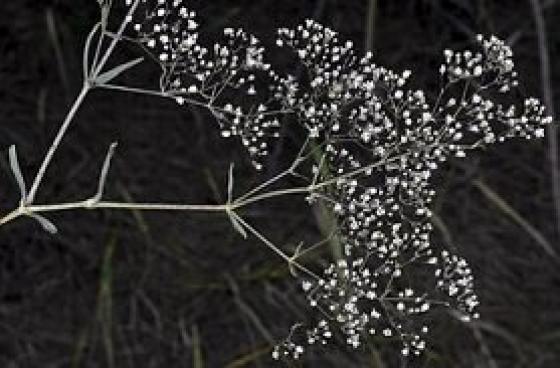
Baby's Breath
Scientific Name: Gypsophila paniculata
Family: Caryophyllaceae (Pink Family)
Life-Cycle: Perennial that reproduces by seed
Weed Guide > Baby's Breath

Baby's Breath
Scientific Name: Gypsophila paniculata
Family: Caryophyllaceae (Pink Family)
Life-Cycle: Perennial that reproduces by seed
| Description | Bloom (varies by elevation) |
What to Do | When? | Invades Undisturbed Land | State Class |
|---|---|---|---|---|---|
| Many small, branching stems form a bushy round mound covered in tiny white flowers. Can cover large areas. | White flowers are small, about 1/8", and five lobed, often with a purple midstripe. Blooms late June to late Aug. | Aggressively treat new populations. Repeatedly dig small populations; mow before bloom; consider herbicides. | May-June, before it blooms and goes to seed; bag and throw-out seed-heads anytime. | Yes! Commonly found in dry soils of range land, roadside ditches, lightly grazed pastures, and abandoned fields. | C |
See the whole “Toolbox of Weed Control Methods” for more details.